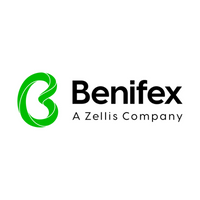Global employee benefits: the simple-to-complex scale

What is the simple to complex model?
Working with our customers, we’ve developed a scale to help pinpoint what level of complexity their workforce requires across their locations, and the options that are open to them. Using our four-stage model, we can lay out how this will look:
Stage 1
This is where we consolidate and display all benefits information into a single employee platform to help them navigate their benefits, and signpost to further information such as claims queries and claims submission with the provider. At this stage, company branding can be applied across the platform in all locations as part of a global strategy.
Stage 2
This takes stage one a step further in adding communication and Total Reward Statements. With the communications module, employers can segment and tailor their messages to connect with sections of employees, such as all those in a specific office or all those with healthcare with important updates and messages.
Stage 3
As the platform becomes more complex, employees have more choice on selecting benefits, for example, they could opt-in to a supplemental dental plan or employee savings plan, and add dependants to medical cover.
Stage 4
In addition to the previous three stages, employees can pick and choose more benefits to suit them, with options such as childcare, gym membership and car allowances available. There’s also the option to apply varying pensions contributions rates.
Of course, whichever stage of the platform an employer decides to implement in whichever region, employees will only see the benefits that they are eligible for. As benefits offerings can vary even within one country (such as parking for certain offices etc.), the technology is agile and surfaces only relevant benefits and content to that region.
What about low-flex regions?
If we take France as an example, we could assume this is closer to the early stages of the scale, given its comprehensive social security cover and mandatory employer-paid complementary plans. In reality, it is closer to the complex end of the scale, enabling choice and flexibility to employees and the option to top-up cover. Some employers have opted to implement a content-only site, with signposting to various health insurers and PERCO employee savings plan – France’s equivalent of a private company pension or 401(k). Others have moved further down the complex road with the ability to vary PERCO contributions rates and even access their commuter refund allowances and lunch vouchers through the benefits platform. While the latter two are also mandatory state provisions, managing them via a single platform can reduce internal administration.
Where do I sit on the simple-complex scale?
Naturally, the factors that determine where each of your territories sit on this scale will vary between companies, as will the priority that these may take when rolling out. To give a few examples, alongside what’s typically expected and available in each region, we factor in things like:
- headcount of the location
- benefits complexity within country
- strategic aims of both the business and the location
- the challenges you are looking to overcome in a location.
For example, Singapore would typically sit in stage four regarding the demand for benefit choice and selection, however if the headcount is low, there may be more appetite for a content-led site.
While some countries may be restricted to a certain level due to local benefit availability and structure, you may decide that information and signposting is the route for all locations – including those with more complexity. This can, of course, change over time, and several employers may start with a content-only solution, increasing complexity over time.
For example, in year one you may wish to bring all the information together in one place, while in year two you can add some basic selection such as adding family members onto medical cover, or opting into a savings plan. This can naturally be timed to coincide with your own benefit journey as you review what’s in place, benchmark against other organisations and look to introduce new or improved benefits.
Similarly, others have gone down the simpler route to begin with so that they have a consistent foundation in place, and then can expand to more advanced solutions as the benefits within certain countries become more complex and widespread.
Flexibility within the stages
Opting for a certain level within one country doesn’t restrict you to only offering what’s within that region. If the country calls for a stage four level of choice and flexibility, it still comes with the simpler solutions below it so you can accommodate all benefits types. A typical approach could be:
- retirement – a simple read-only page with a single sign on (SSO) link to the pension provider
- healthcare – a complex offering meaning the employee can choose from two plan types, selecting dental at own cost, plus adding dependants
- life insurance – a content-only page, detailing the cover paid for by the employer
- accident benefit – a transactional benefit whereby the employee can add supplemental cover to the company paid base level
- flex offering of gym membership, lunch vouchers, shopping vouchers and wellbeing check-ups.
Flexible technology: exceptional employee experience
These are just a few things to consider and a few benefits technology options available to you when rolling out your scheme globally. Remember it’s not a one size fits all – make your technology work for your organisation and the challenges that you face. As long as you’re doing what’s best for your people and your organisation, you’ll be delivering an exceptional employee experience.
Find out how you can improve employee engagement and maximise your ROI by centralising and streamlining the employee benefits journey in our report, A home for all-things reward and benefits.
The author is Paul Andrews, global benefits director at Benefex.
This is a sponsored article provided by Benefex.
Supplied by REBA Associate Member, Benifex
The home of award-winning employee benefits, reward, recognition, & communications.







